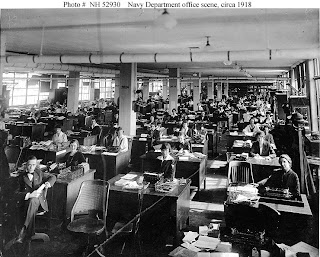There was a time - before the private security ship-riding teams and before the EU, NATO,China, Japan, South Korea, the U.S. (and, of course, the mighty battle fleets of Iran) took on patrolling the Gulf of Aden and Somalia's shores- when piracy was a hot topic and a true danger to shipping transiting the upper Indian Ocean.
Of course, the failed and corrupt "state" of Somalia sitting on major sea lanes was necessary jumping off point for most of the area's pirates until the
de facto blockade of its known pirate bases coupled with the convoys and private security teams has apparently severely limited the scope Somali pirate activity.
What piracy concerns remain?
Well, of course, the increase in hijacking off Nigeria and in the Gulf of Guinea.
Then it's back to the pattern of days before Somalis in small boats loaded with AK-47s and RPGs bothered the high seas - back to the days of low grade theft, muggings and sea robbers.
This is best illustrated by some reports. First, from the U.S. Office of Naval Intelligence's
Worldwide Threats to Shipping Report (in this case dated 21 August 2013:
2. (U) Summary
1. (U) BANGLADESH: On 16 August, an anchored container ship was boarded at the Chittagong Anchorage.
2. (U) NIGERIA: On 15 August, an anchored tanker experienced an attempted boarding at the Lagos Anchorage.
3. (U) BANGLADESH: On 15 August, a fishing trawler was hijacked, along with the kidnapping of 15 fishermen, along the Meghna River under Hatia upazila of Noakhali.
4. (U) NIGERIA: On 15 August, a product tanker was boarded in the Gulf of Guinea.
5. (U) BANGLADESH: On 14 August, two fishing trawlers were hijacked, along with the kidnapping of 21 fishermen, along the Meghna River.
6. (U) NIGERIA: On 12 August, an offshore support vessel was fired upon approximately 35nm off the Nigerian coast.
7. (U) BANGLADESH: On 10 August, an anchored container ship was boarded at the Chittagong Anchorage.
8. (U) INDONESIA: On 2 August, an underway product tanker was boarded approximately 9nm north of Bintan Island.
So, let's give a salute to the efforts of the group mentioned in the first paragraph above - open sea piracy off
Somalia is off the reports - at least for now.
So, let's look at the most dangerous areas that exist now.
Being a fisherman off Bangladesh must suck - especially since some of the previous kidnapping have ended poorly for the victims (see
Killer Pirates of the Bay of Bengal: 20 Bangladeshi fishermen Found Dead for example).
Such piracy is not an international issue - at least not one that will get NATO, the EU, etc involved. Further, as noted in the ONI report, in these two cases at least 10 of the 36 victims have been rescued by local authorities.
Further, as long, and very well, documented by the ICC's IMB
Live Piracy Report ("Piracy and Armed Robbery Report"), threats to sailors often come from people climbing aboard anchored or moored ships and stealing loose gear or robbing crews at gun or knife point. For example:
10.08.2013: 2345 LT: Posn: 00:16.0S – 117:36.3E, Samarinda Anchorage, Indonesia.
Three robbers in boiler suits boarded an anchored bulk carrier awaiting for the cargo barge. The robbers held the 3/O who was on routine rounds at the forecastle. They hit him and threatened him with a knife while another five robbers boarded the ship, broke the hatch cover with pipes and crowbars and began to steal ship’s stores. The robbers escaped in a speed boat with the stolen stores and the 3/O personal belongings upon seeing duty crew approaching the forecastle. Upon investigation it was found that the robbers boarded the ship by breaking the hawse pipe security steel grill /cover bolt and nut lock.
Much of this activity occurs within the territorial waters of nations and it is thus local crime (but one that may affect international commerce).
All of which is a long way of getting back to what this post's headline states - we are seeing a reversion to form - more sea robbery, fewer ship hijacks.
Thank goodness.

























